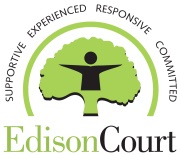Pornography and Contact Offending
Many people express concerns about the potential for a relationship between pornography and inappropriate sexual behavior. However, questions remain as to whether we are wisely using our professional energy and resources trying to prevent persons with histories of sexual crimes from having access to sexually explicit materials. Sexual offenders are typically restricted from possessing any type of pornography, but there are no clear demarcations between artistic expressions of the human form, sexually suggestive images, erotica, or hard core pornography. When the legal consequences for possession of any sexual media are so severe, defining pornography has never been more important.
In the United States, numerous court decisions, presidential task forces, and various think tanks have been unable to produce an agreed or useful definition of pornography. With the need for greater precision within our profession, our field would benefit from fine-tuning and distinguishing between various types of sexual media. Using “pornography” to describe all forms of sexual media is both imprecise and emotionally loaded. It can obscure treatment needs and interventions. Missed opportunities of therapeutically beneficial sexual imagery could inadvertently lead to more harm.
The historical perspective that sexually explicit images are offensive and therefore must be harmful is such a powerful narrative. We wonder whether some restrictions imposed on our clients are the considered application of good science or a default result of moral panic. Though controversial and perhaps even counterintuitive, evidence of the adverse effects of sexual media has not been established. Other than child pornography, broad sexual media restrictions for most persons who have sexually abused do not appear to be supported by research. Frequently, restrictions on “pornography” for such clients include prohibition of every type of sexual media.
It was once assumed that all persons who had sexually abused were at high risk to persist. Not only has this turned out to be untrue, but the rates of sexual aggression and re-offense have declined at the very same time as access to sexually explicit imagery has never been easier. An interactive relationship between these co-occurring trends has not been clearly established but they should cause us to reconsider our attitudes and beliefs about what is important in the treatment and supervision of persons who have sexually abused. Following the model of Risk-Needs-Responsivity, the risk and need principles may guide the formation of effective interventions. To that end, professionals would be wise to thoroughly assess the effects of sexual media on individual clients (see appendix). Ultimately, of relevance would be to determine what an individual’s pornography use is reinforcing or satiating. Certainly, one’s intent in seeking out and viewing pornography largely determines the potential danger of reinforcing unhealthy or deviant themes, or otherwise healthy sexuality.
Appendix
In assessing the effects of sexual media on individual clients, professionals might want to explore:
1. The client’s history, current use, and experience with different types of sexual media.
2. The client’s use of sexual media – compared to normative data.
3. Possible connections between certain sexual media and problematic sexual behaviors.
4. Escalating or compulsive patterns of the use of sexual media.
5. The possible relationships of sexual media to the index offense(s).
6. The use of sexual media as socially or psychologically avoidant/protective.
7. How sexual media could be interfering with relationships.
8. The use of sexual media to explore or satisfy sexuality curiosity.
9. How sexual media may be an element of libido management.
10. Whether clients might benefit from a modified use of sexual media.
11. The possible therapeutic or conditioning benefits of proscriptive sexual media.
12. Sexual media that might be contraindicated therapeutically or socially.
13. The legal hazards or consequences for accessing certain types of sexual media.
14. Limitations on certain sexual media for specific higher-risk offenders.
15. The various risk factors involved in client’s access to sexual media via the Internet, cell phones, digital cameras, wi-fi communication devices, and social networking websites.
16. The degree to which clients can exercise internal controls in managing sexual media or to what level
external controls might be beneficial to aid in risk management.
17. How clients can move from external controls to internal controls prior to discharge from treatment or supervision in anticipation of independent management (self-regulation).

Add new comment